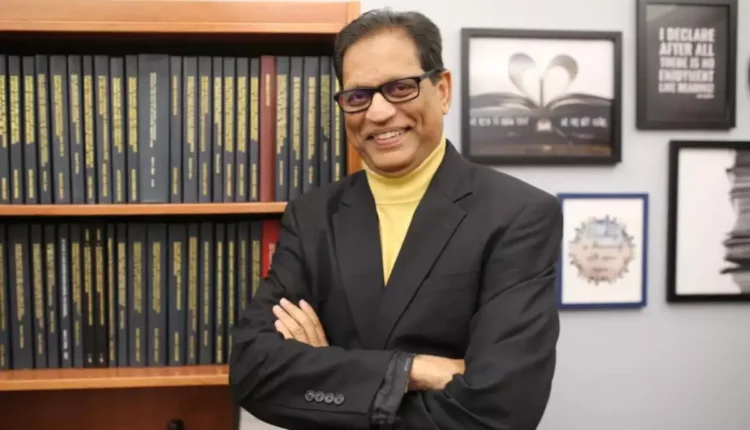In the vast and often abstract world of mathematics, few names shine as brightly as that of Mathai Varghese. A mathematician of remarkable depth and vision, Varghese has left an indelible mark on the field through his groundbreaking contributions. As a full professor at the University of Adelaide, Director of the Institute for Geometry and its Applications, and a recipient of numerous prestigious awards, his work not only resonates within academic circles but has also found profound applications in the world of physics.
Mathai Varghese’s journey from a curious student in Bangalore to a revered mathematician in Australia is both inspirational and a testament to his unyielding dedication to advancing mathematical knowledge.
Early Life and Education of Mathai Varghese: Seeds of Mathematical Genius
Born and raised in Bangalore, Mathai Varghese’s academic journey began at the well-known Bishop Cotton Boys’ School, a foundation that nurtured his early curiosity in mathematics. This curiosity soon evolved into a passion, leading him to the Illinois Institute of Technology, where he pursued a BA in Mathematics.
However, it was his move to the Massachusetts Institute of Technology (MIT) that truly shaped his career. At MIT, he was mentored by none other than Daniel Quillen, a recipient of the Fields Medal – the most prestigious honor in mathematics. Under Quillen’s guidance, Mathai completed his Ph.D., working on problems that would eventually revolutionize how we approach certain areas of mathematics.
The Mathai–Quillen Formalism: A Pioneering Contribution
The cornerstone of Mathai Varghese’s career is undoubtedly his work on the Mathai–Quillen formalism, which he developed in collaboration with his mentor, Daniel Quillen. This formalism introduced a new perspective in the realm of geometric analysis, with far-reaching implications in index theory and topological quantum field theory. But what does this mean for the non-mathematician?
In simple terms, Mathai and Quillen’s work offered an elegant refinement of the famous Riemann-Roch formula, bridging the gap between abstract mathematical theory and its application in physics. The Mathai–Quillen formalism essentially linked together Thom classes in K-theory and cohomology, giving new insights into how these fields interrelate.
This work has found a deep resonance in physics, particularly in the study of quantum field theory—a branch of theoretical physics that seeks to understand the fundamental forces of nature. By framing their results in a way that connected classical and quantum partition functions for a fermionic harmonic oscillator, Mathai and Quillen provided physicists with powerful tools to explore the universe at its most fundamental levels.
Career Achievements: A Scholar and Leader
In 2006, Mathai Varghese reached a significant milestone in his career when he was appointed a full professor at the University of Adelaide. His appointment recognized not only his contributions to mathematics but also his leadership in shaping the future of mathematical research. Just three years later, he was named Director of the Institute for Geometry and its Applications, where he has continued to push the boundaries of what is possible in the field.
Varghese’s work spans multiple areas of geometric analysis, including noncommutative geometry and index theory. These are not just abstract fields of study, but areas with practical implications for our understanding of the physical world.
His current research delves into problems rooted in physics, such as the fractional quantum Hall effect, topological field theories, and the complex behavior of D-branes in the presence of B-fields. Through these investigations, Mathai Varghese seeks to uncover the mathematical structures that govern the universe’s most intricate processes.
Recognition and Honors: A Life of Achievement
Mathai Varghese’s outstanding career has been recognized with numerous awards and accolades. In 2011, Mathai Varghese was elected a Fellow of the Australian Academy of Science—an honor reserved for individuals who have made exceptional contributions to their field.
Two years later, in 2013, he was appointed the Sir Thomas Elder Professor of Mathematics at the University of Adelaide, solidifying his place as one of Australia’s most distinguished mathematicians. That same year, he was elected a Fellow of the Royal Society of South Australia, further recognizing his role as a leader in the scientific community.
His recognition did not stop there. In 2017, Varghese was awarded the ARC Australian Laureate Fellowship, one of the highest honors in Australian research. This prestigious fellowship is awarded to researchers who have demonstrated not only exceptional academic achievement but also the ability to lead and inspire future generations of scientists.
Perhaps the most significant recognition of Varghese’s work came in 2021 when he was awarded both the Hannan Medal from the Australian Academy of Science and the George Szekeres Medal from the Australian Mathematical Society.
The Hannan Medal is awarded to individuals with an outstanding career in mathematics, while the George Szekeres Medal is the most prestigious award given by the Australian Mathematical Society. Together, these honors recognize Varghese’s unparalleled contributions to both research and the promotion of mathematics in Australia.
The Road Ahead: A Legacy in Progress
While Mathai Varghese’s list of achievements is already impressive, his journey is far from over. His ongoing work with notable mathematicians such as Richard Melrose, Isadore Singer, Peter Bouwknegt, and others ensures that his contributions to mathematics will continue to shape the field for years to come. His research on T-duality in the presence of background flux, in particular, has the potential to unlock new understandings in string theory—a key area of study in theoretical physics that seeks to explain the fundamental nature of all matter and energy.
Also Read:Peter Varghese: A Visionary Diplomat and Transformational Leader

